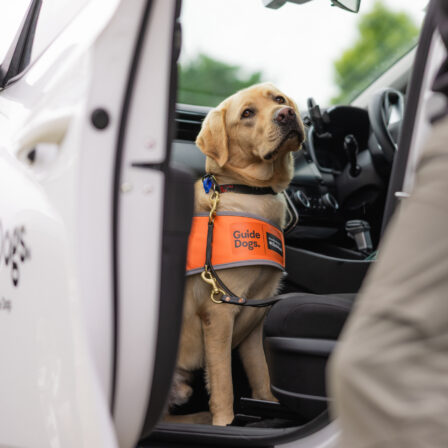News
Different Cane Tips and Their Uses: A Comprehensive Guide

When it comes to cane tips, one size doesn’t fit all. Each type of cane tip serves a unique purpose and performs differently depending on the surface you’re navigating.
Whether you’re on a smooth sidewalk or a rugged trail, choosing the right cane tip can make a world of difference in how you experience the world.
In this article, we’ll explore various types of cane tips and how they’re designed for specific environments.
1. Marshmallow Tip: The Classic Choice
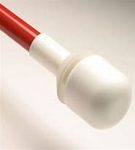
The marshmallow tip is the most common type of cane tip you’ll encounter, and for good reason. With its rounded shape that resembles a marshmallow, this tip is incredibly versatile. It works well on a variety of surfaces, from smooth pavement to carpeted floors, and is easy to use for most people. However, it does have its limitations – it is not ideal for rough or loose terrains such as sand or dirt, where it might struggle to provide the necessary feedback.
2. Rolling Ball Tip: Tactile Feedback and Easy Navigation
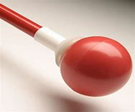
For those who need a little extra help navigating uneven surfaces, the rolling ball tip offers an enhanced tactile response. About the size of a golf ball, the rolling ball can roll over cracks, bumps, and small obstacles with ease. Like the marshmallow tip, it is effective on most surfaces but also struggles with sand or dirt. Its improved tactile feedback makes it a good choice for users who prefer a more responsive feel underfoot.
3. Omnisense Cane Tip: Designed for Rough Terrain
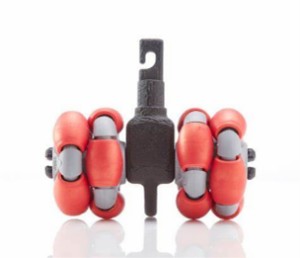
The omnisense cane tip features two small wheels that resemble those on a push scooter, offering a 360-degree range of motion. While not as popular as the marshmallow or rolling ball tips, the omnisense is particularly effective for navigating rougher terrain. For example, if you enjoy bushwalking, this tip will give you excellent feedback, allowing for smoother and more precise movement through irregular and rugged paths. Its ability to move in all directions makes it a unique option for outdoor adventures.
4. Dakota Disk: Perfect for the Beach
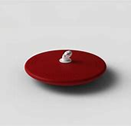
If you’re planning a trip to the beach, the Dakota disk is your go-to cane tip. Shaped somewhat like a metal detector, this tip is designed to glide over sand. It hovers just above the surface, providing tactile feedback when obstacles are present. The Dakota disk is perfect for sandy beaches, as it can easily move across the soft terrain while alerting you to changes in the environment.
5. Jumbo Tip: The “Donut” Tip for Rough Surfaces
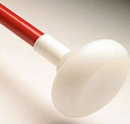
Also known as the “donut tip” due to its large, ring-like shape, the jumbo tip is ideal for gliding over rough surfaces. Whether you’re navigating gravel paths or uneven ground, the jumbo tip helps you maintain balance and stability. Its larger size allows for better surface contact, ensuring that obstacles are detected earlier. Clients who use this tip often describe it as feeling like a smooth, effortless glide over bumpy terrain, making it a great choice for users who encounter rougher environments regularly.
Choosing the Right Cane Tip for Your Needs
Depending on the type of cane you use, there are several ways to attach a cane tip. In most cases, the tip simply slides onto the end of the cane, making it easy for individuals with low or no vision to apply the tip by themselves. However, some cane models require the tip to be hooked onto an internal mechanism at the end of the cane. This type of attachment can be trickier, as if the hook becomes detached or lost, it may be difficult to retrieve, making it important to ensure the tip is securely in place.
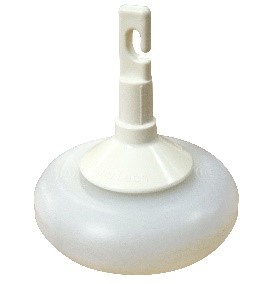
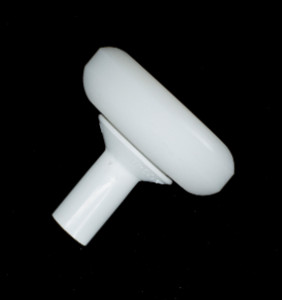
Conclusion
The type of cane tip you choose depends largely on your environment and personal preference. Whether you’re navigating urban streets, trekking through the wilderness, or enjoying a day at the beach, there’s a cane tip designed to provide the best feedback and support for your needs. Take the time to explore your options and choose a cane tip that enhances your mobility, comfort, and confidence.




